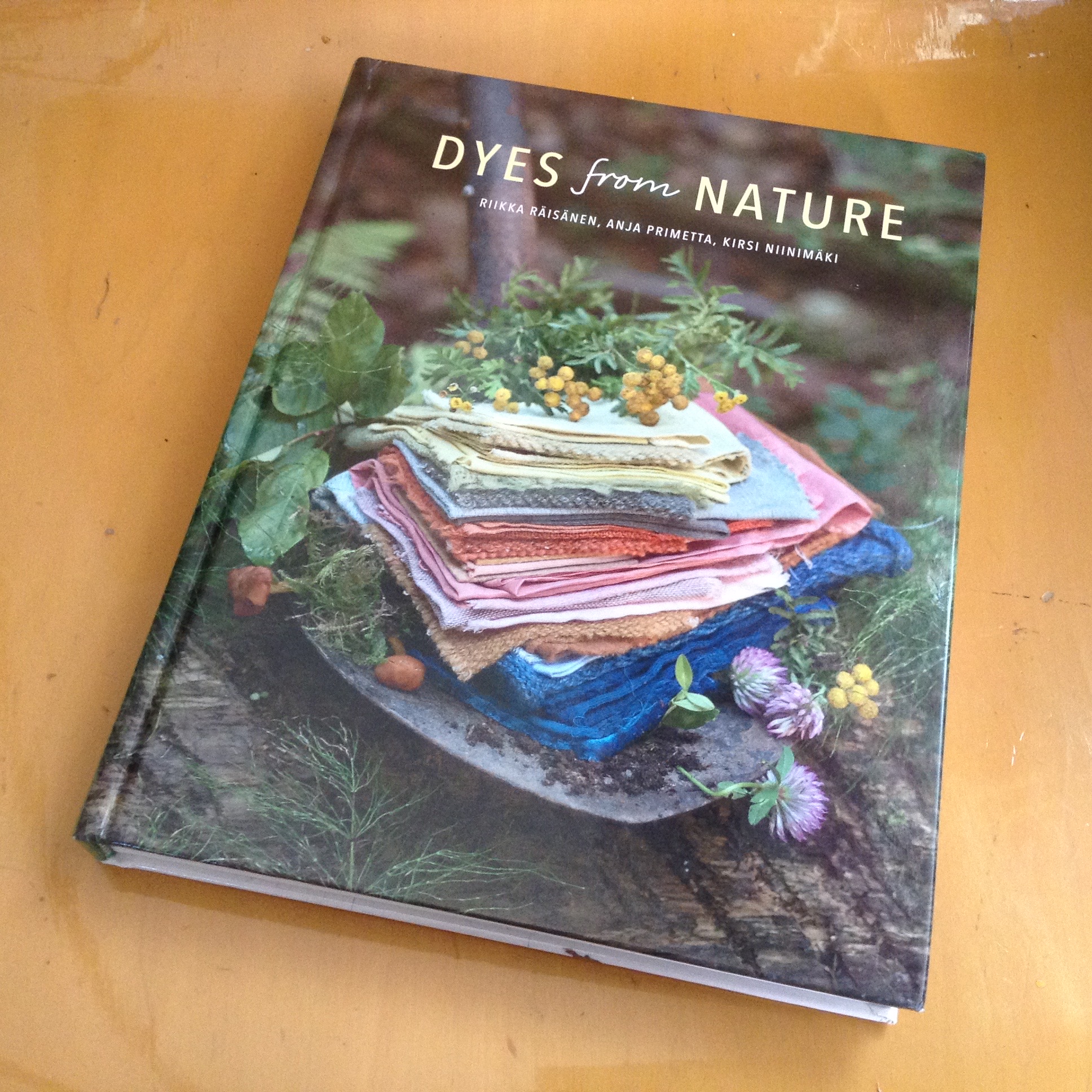Out takes from the "Scarves of Mystery"
IMG_3816
A few weeks ago I was fortunate enough to take part in the farm and artisan Summer Bazaar at HiiH Lights, where I sold botanically printed silk scarves. It was super fun. A few days prior to it I put together a last minute addition for the booth, a baker's dozen of "Canned Silks." I sold these scarves as Scarves of Mystery. Basically I weighed out dyes to dye one scarf, rolled the silk up with the dyestuffs, put them in individual small jars, added some water and screwed on the lid. These were then put into a boiling water bath to seal the jars. The mystery part is that the dyestuffs would theoretically be unevenly applied and the silks may end up with some unexpected patterning.
I sold enough of these canned scarves to purchase a dye book that I have been wanting, Dyes from Nature, written by Riikka Raisanen, Anja Primetta and Kirsi Niinimaki. It was originally published in Finnish. I am enjoying it very much. More of a text book than a how-to book, it is helping to feed my current insatiable curiosity about dyes.
IMG_3911
IMG_3915
Predictably what sold were the the red jars, and I came home with most of the yellows. Today I opened two of the jars up. I chose the two that looked the least saturated, namely weeping Birch Leaves: Betula genus- unknown species probably pendula, and Tansy: Tanacetum vulgare. Both have been used as dye plants in northern Europe for centuries. Tansy is coincidentally featured in the book.
Today the opening of the jars was accompanied by crisp somewhat medicinal smells. Which makes sense as both plants have medicinal uses. Birch leaf tea is a thing, used to help with UTI and soothe pain. Conversely Tansy has always been a low dose botanical, as it can be toxic. Which serves as a reminder that ventilation is always a very good thing while dyeing. Natural ≠ Harmless.
IMG_3910
The colors are soft and beautiful - I think I will put in some rusty iron the next time I can up some silk with these plants, with hopes of enticing some greens to come forth. The color was much more even than I expected as the silk was crammed into the jars in a somewhat willy nilly fashion.
I am curious whether the tansy will remain aromatic after it dries. Years ago I wove a mohair blanket dyed with California bay laurel which maintained a wonderful scent for over ten years. The scent of the birch is much more woodsy than the tansy, less sharp, though very pleasant. The scents from plants is such a rich part of the dyeing process for me, even the pungent aroma of the indigo vat has its own appeal.
Nature is generous with yellow dyes, not all of which like to stick around. Dyes from Nature lists some of the chemical components within Tansy, some of which point to it possibly having good fastness, which is reassuring. Tansy is native to Eurasia and is naturalized throughout the United States and Canada. It isn't recommended as a medicine these days.
IMG_3908
There are a many Birch species native throughout the northern hemisphere, as well as being frequently planted for their beauty. If gathering birch leaves for tea, be sure to choose a tree growing away from roadways and pesticide use. I also used birch leaves to eco print silk this summer - it gives strong bright color and crisp edges.
IMG_3909 2
IMG_3477
When I used tansy leaves and flowers to eco print silk the impressions were very diffuse, so it did not make the cut on the list of plants I want to use in that way. Its long history as a dye, and aromatic tendency do inspire me to try in on weaving fibers.I harvested the tansy while visiting my friends in Bellingham in July, and have enough dried to do a bit more experimenting. I will think of them and the walk we took together whenever I do so.
Birch has really come into my heart in a big way this summer as well, and I look forward to working with her more. Both as a print, and for immersion dyeing. Even though these two jars might have been considered duds I am actually inspired to dig a little deeper into the dye capacity of both these wondrous and generous plants.








